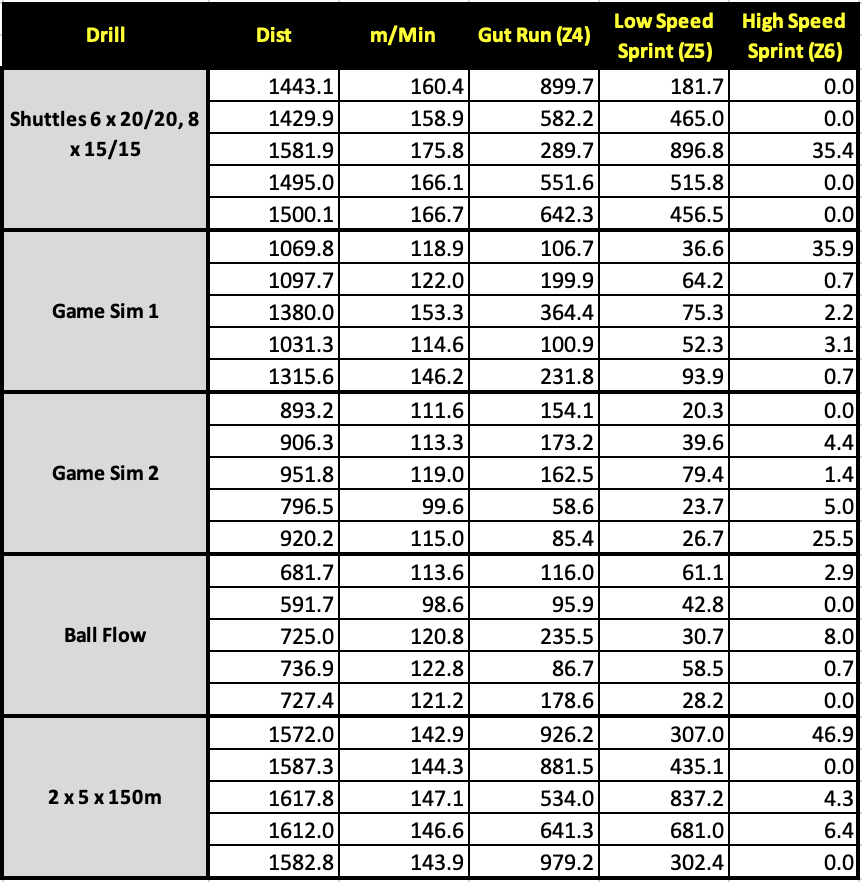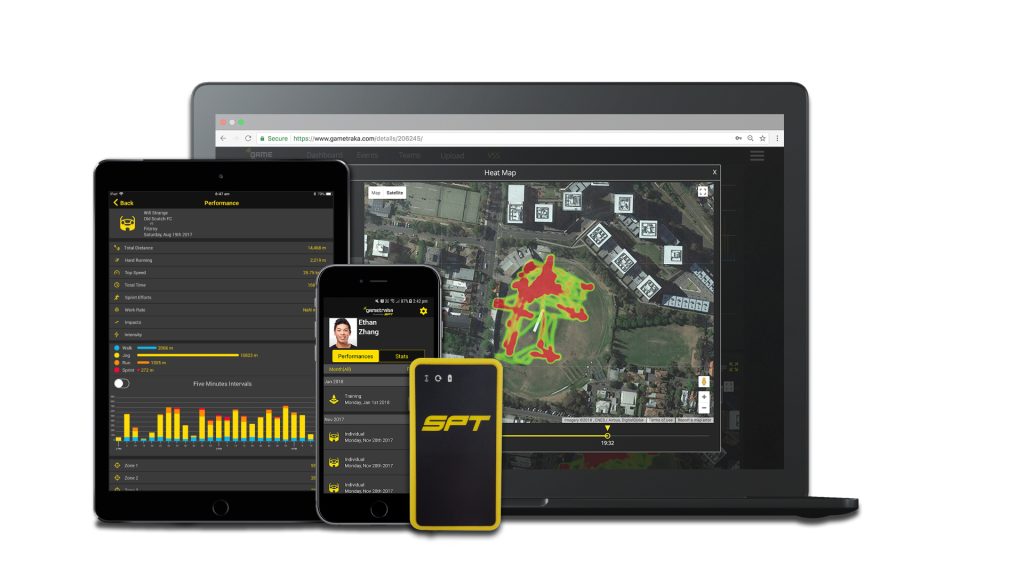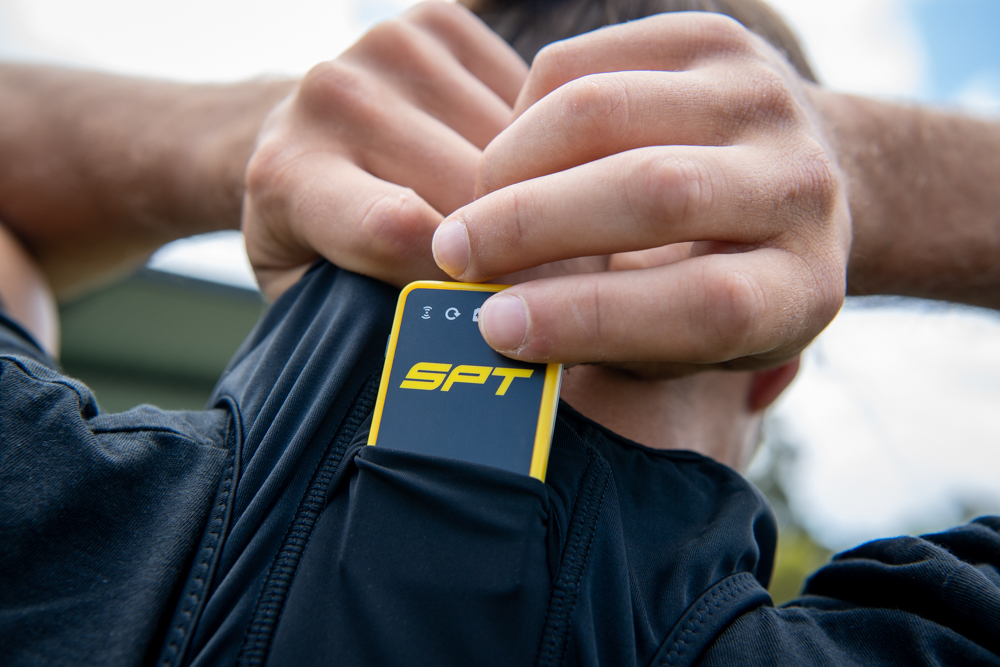10 key tips when working with GPS units at local clubs
GPS (global positioning system) units have become more and more widespread in their use, and with affordable and accurate tracking devices now also available on the market, more and more are appearing at grassroots level – not just semi professional and junior competitions like SANFL, WAFL, VFL and the like – but local footy clubs too.
And while some units are very user friendly – even if you have had no experience with them before - not every club has people employed within them with a deep understanding of the intricacies of the use of GPS units.
What exactly am I using them for?
What should I be looking at?
Which of these metrics is most important? – And then what do I do with it?
When I get metrics like meters covered, what is the context? What is high or low?
So here we look at 10 general tips or guidelines for local clubs and coaches at local clubs to take into account with their own use of GPS units, in order to maximise the benefit you get from your units.
Don’t get carried away with lots of metrics
Most GPS units will automatically collect and collate dozens of metrics – with all sorts of complicated sounding names. Decide what it is that you want to inform your monitoring and pick a couple metrics only.
For most this will normally involve a couple running based metrics.
The ones that we track are;
Total distance – nice and simple
High speed running – which for us is Zone 3 and zone 4 (4 zones) on the pre-set speed bands on our SPT units
Work rate – meters per minute covered (as covering 8km in a 2 hour night is vastly different to covering 8km in a 70-minute night).

“So, if we ever meet, don’t ask me what variable you should be using, instead tell me what you are doing: “I measure X to describe Y. What’s your opinion on that?” That way you have informed me about the work you have done to date and asked an opinion, not just blindly requested random information.”
Jason Webber
Former High Performance Manager, Fremantle Dockers
Be wary of team averages with load monitoring
A common practice with many teams is to use team averages when monitoring the training load of a group. This is often done out of necessity – where teams have say 6-10 units to spread across a group of 40-60 players, as well as limited time and personnel resources to monitor 1 for every player.
But it is important to look over the individual outputs briefly, rather than just going off the average, as with only a handful of data points (players) an average can look nothing like the wildly different (at times) totals that some players are presenting – especially when talking about the higher speed running.


Take note of the team averages in the first image, and the individual players in the second image - particularly high speed running and sprint distance. Going off team averages exclusively, we would say that in terms of high speed running, it was a 2000 meter (1988 to be exact) night. When in reality, there was 1600m difference in high speed running between 2 of the players (138m vs 2962m).
Don’t let the numbers become the training
We are not ‘training to hit 10km tonight.’ Rather the distance covered (or whatever you are measuring) is a by-product of the footy training that you are doing. The totals you have set yourself for a given night are merely a ‘load budget’ or a guideline that you would like to push to or are allowing to push to. This may seem like semantics, but often the mentality when GPS units come available is to focus more on the actual numbers on them and really try to rack them up as high as possible. This is particularly the case with units that offer live tracking.
So remember – the numbers are a guide to having a general understanding of the load of training and games, they aren’t the training themselves.
Take note of the demands of different drills
This is an area where having some GPS units is very helpful, and over a couple of seasons, if you are consistently using the same or a similar battery of drills, you can accumulate some really good data about the demands of your specific drills.
After training we cut our drills up, which with the SPT’s takes all of 1-2 minutes on the interface, so not a time consuming process at all. We then also keep these numbers in a database for future reference if rolling out a drill, and to have an idea on what work rate (meters per minute will be in that drill).

With this done consistently, you will be able to plan the demands of training more accurately, based on the work rate (meters per minute) or whatever metric you are interested in, and combining that with the time you intend to allocate to that drill.
Who to put them on
Not many clubs will have a unit for every player. So do you go for consistency and put them on the same 6-10 players? Or do you spread them around and see what sort of outputs you get from different players. The upside of using the same players is that data comparisons across drills and across nights will be more accurate. In saying that, it is always beneficial to the motivation of players within the group to know they are being watched and not left out, which makes this option also very beneficial. And at the end of the day, as mentioned earlier, we are not training for numbers.
Personally in our setup, we have a general battery of players that wear the units consistently, and a another bunch of units that are rotated from night to night.
Understand that speed bands are arbitrary zones
All units come with pre-set speed zones. Some have 4 zones, some have 6. All companies have different cut off points for the different zones, and they all have different definitions of what constitutes ‘high speed’.
It is important to be clear – these are just arbitrary cut-offs.
There is nothing special about 5.5 meters per second, or 22km per hour or whatever the cut-off is and the unit of measurement used. They are just bands that are generically put as ‘zones’. And also what makes 5.5 m/s any more high speed than 5.4m/s?
I recently switched clubs, both using the same SPT units, but at one club we had 6 zones set up in a customisation tab, while at the other we just have the 4 zone pre-set units. What this meant for me was the highest zone at the current club – zone 3 & 4 – seeming astronomically high due to the relatively lower cut-off, compared to the zone 5 and 6 (and even zone 4) at my previous club. And not only that, none of the speed zones lined up at all.
This meant that when I first looked at the previous years data, it meant nothing to me in terms of the intensity zones. This took a few weeks of getting used to the what sort of outputs we get from different kinds of training.


The tables above show speed zones 4, 5 and 6 (previous club), with zone 5 and 6 being higher cut off points that the bottom of zone 4 in the previous tables that I presented (more recent club). As a result, there is a lot more zone 4 (highest zone) in the earlier tables shown than there is zone 5 and 6 (highest zones) in these tables.
I tell this brief story to highlight that the speed zones once again, are merely arbitrary cut offs, and broad categorisations. Certainly very beneficial to have high intensity running rather than just total distance – but don’t get too caught up in what amount to random cut-off points.
An additional quick point to note, every individual is different – and so someone running at 5.5m/s and their top speed is 8.0m/s is a vastly different demand than for someone whose top speed is 9.5m/s.
Combine with RPE
Keep records of internal vs external workload
Your external workload is the output of what you are doing – tackling, running, sprinting. We are able to measure external output with GPS metrics.
Your internal workload is how you respond internally to this external workload – heart rate, metabolism, muscle soreness, etc. A simple and effective way to measure this is sessional RPE – how difficult a player found that session with a score out of 10. This can then be further turned into an internal load, by multiplying the RPE by the duration of the session.
So a session was 7/10 and went for 70 minutes of actual training time, would be a session load of 490.
The main point here is the sessional RPE on its own – to have from the players wearing the GPS units, and having the record of how difficult they found certain sessions internally – relative to the external running load.

Set aside a unit or 2 for rehab players
Having a GPS unit or 2 on players who are working their way through rehab from and injury can be very advantageous for measuring and gradually progressing their running loads and speeds – first in isolation, then into actual training. Of course this would need to be guided by an expert like a physio or an s&c coach, however having this tool available to them will help make their job easier in terms of being able to a lot more specific in their prescription.
More to load than just running meters
To a football coach (more so than an s&c coach), this point would appear obvious. There is a lot more that happens in footy that contributes to a players load than merely the running component;
-Contests
-Tackling
-Being tacked
-Jumping and landing
-Kicking (very underrated)
GPS units are a very useful tool – in tracking what is a very big part of training and playing load. But they are still tracking this one element (primarily).
However you can have a 5km night with a ton of tackling and in close work, that is a hell of a lot more taxing than a 9-10km night on open end-to-end drills, with minimal contact and competitiveness.
I experienced this previously, where a planned ‘light night’ was only down for 5km in our schedule (the previous session 2 nights earlier was 9km), and sure enough it was kept to 4.5km. However, what this turned into was a lot of in close-competitive tackling and body-on-body based drills, which ended up giving the highest sessional RPE of the pre-season to that point.
“In our world, the bulk of GPS data we collect at the professional level informs us of only a small aspect of what is happening to the athlete on the field. Too often, I see isolated pieces of data being utilised to justify one-size-fits-all solutions.”
Jason Webber
In summary, spending some money on some GPS has many advantages for local clubs and coaches. Additionally, there are models like the SPT units which we use, which are both not cost prohibitive, but also very simple, quick and easy to use (doesn’t require any special skill set). However, if and when you do invest in some units, be aware of these points that we have covered today, in order to get the most out of the use of your units.





